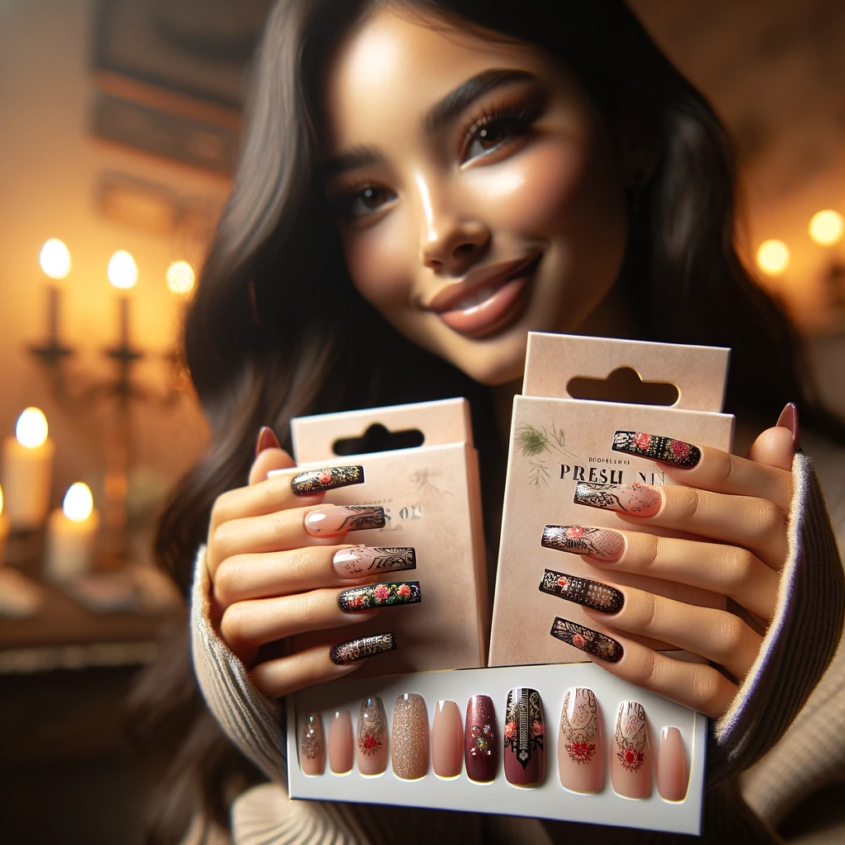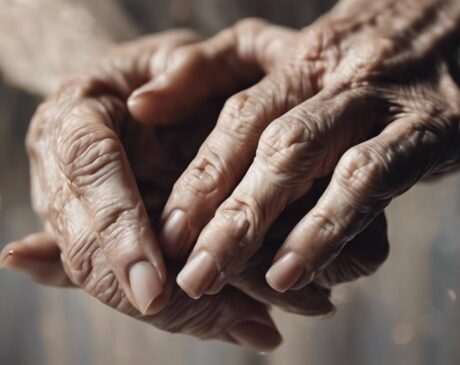Do you have to shape press on nails?

Press-on nails offer a convenient and cost-effective alternative to traditional manicures. They are easy to apply and remove and are perfect for those who want a salon-quality look without the time and expense. These nails come in a variety of shapes, sizes, and designs for personalization and creativity. In addition, press-on nails are less damaging to natural nails than acrylics or gels because they require minimal filing and are not exposed to UV rays or harsh chemicals.
The Basics of Shaping Press-On Nails
Types of Nail Shapes
Nail shapes vary greatly, and each shape has a different aesthetic appeal. Popular shapes include:
Round: natural and easy to maintain, perfect for shorter nails.
Square: has a classic, simple look with a flat top and sharp, straight sidewalls.
Oval: similar to round, but slimmer, giving a more feminine look.
Almond: similar to a nut, featuring a wide sole, thin sides, and a rounded tip.
Stiletto: striking and pointed, they are usually longer and bolder.
Coffin/Ballet Shoes: characterized by a square tip but tapered sides, similar to a coffin or ballet shoe.
Tools needed for shaping
The right tools are essential for effective and safe shaping of press-on nails.
Nail files and buffers
Nail files are used to trim the edges of the nails, while buffers are used to smooth the surface. It is important to choose a file with the right grit – a higher grit means a finer file. For press-on nails, a medium grit (around 180) is usually appropriate.
Scissors and clippers
Nail clippers or scissors can be used to trim the length of pressed-in nails and then file them to the desired shape. Express clippers provide a more direct cut, while scissors provide a more precise cut.
A step-by-step guide to shaping press-in nails
Shaping press-in nails requires patience and a steady hand. Follow the steps below for the best results.
Preparing your nails
Start by cleaning your natural nails with a nail polish remover to remove any oil or residue. Then, gently push back your cuticles and buff the surface of your nails to create a smooth base.
Measuring and cutting the press-in
Measure your press-on nails against your natural nails and choose the size that best fits each nail. If necessary, trim the sides or tops of the press-in nails with scissors or scissors for a better fit.
Filing and Finishing
Once the press-in nails are the correct size, use a nail file to trim the edges to your desired style. Be gentle in your movements to avoid splitting or cracking your nails. Finish by buffing the surface for a smooth, even look.
Tips and tricks for perfect shaping
Achieving the perfect shape takes practice and attention to detail.
Shaping Symmetry
To ensure symmetry, always compare the nails of both hands. File in one direction to avoid uneven edges and aim for consistency in shape and length.
Keeping Nails Healthy During Shaping
It’s important to protect your natural nails when shaping press-on nails. Avoid over-filing and apply a strengthening base coat to your natural nails before applying the press-on. This helps prevent damage and keeps your nails healthy.
Common Mistakes to Avoid When Shaping
Shaping press-on nails is an art that requires precision and care. Understanding common mistakes can help you create a more professional and attractive look.
Overfiling and Uneven Shaping
A common mistake is over-filing your nails, which weakens the press-on nails and makes them prone to breakage. Always file in one direction using gentle strokes. Uneven shapes can be avoided by frequently comparing the nails on both hands to ensure that the shape and length of each nail reflect that of its counterpart.
Neglecting Nail Health and Hygiene
Neglecting natural nail health and hygiene can lead to a variety of problems. Always start with clean, dry nails and avoid overly aggressive adhesives. Make sure your tools are sterilized and handle your natural nails gently to prevent damage.
Customize the shape for different occasions
Press-in nails provide the flexibility to customize nail styles for different occasions.
Elegant shapes for formal events
For formal events, classic shapes such as oval, almond, or square create an elegant and sophisticated look. These shapes are versatile and work well with both traditional and modern styles.
Fun, edgy shapes for casual outings
Casual outings are the perfect opportunity to experiment with fun and edgy shapes. High heels, coffins, or unique custom shapes can add a playful and bold element to your look.
Advanced Shaping Techniques
For those looking to take their nail game to the next level, advanced shaping techniques can add a unique touch.
Shaping Unique Nails
Incorporate nail art into your styling process. This can include creating asymmetrical designs, adding embellishments, or using a combination of different textures and colors. Shaping your nails to complement your nail art can lead to a truly customized look.
Mixing different shapes
Mixing different shapes on different nails and even on the same nail can create a fashion-forward look. This technique requires precision but can create a stunning edgy nail style.
Pros and Cons of Shaping Press-On Nails
Understanding the pros and limitations of press-in nail shapes is crucial to getting the best results.
Longevity and Durability Issues
One of the disadvantages of shaping press-in nails is that it can reduce the longevity and durability of your nails. Over filing or over shaping can weaken the nail and make it more prone to cracking and breaking.
Aesthetic and Practical Benefits
Despite the potential drawbacks, the aesthetic and practical benefits of shaping press-on nails are significant. Custom shaping creates a personalized look that suits your style and preferences. It also offers an affordable alternative to professional manicures with tons of creative possibilities.
Shaping press-on nails is a combination of art and technique that enhances the beauty and style of a manicure. The process, from choosing the right shape to mastering the use of various tools, offers a world of creative possibilities. While it’s important to be aware of common mistakes such as over-filing nails and neglecting nail health, shaping press-on nails is largely about expressing personal style. Whether choosing an elegant shape for a formal event or experimenting with fun designs for a casual outing, the flexibility and versatility of press-on nails can accommodate all tastes and occasions. By balancing aesthetic appeal with practical considerations such as durability and nail health, anyone can master the art of shaping press-on nails to create stunning looks that are unique and sophisticated.
Frequently Asked Questions
Do I need professional tools to shape press-on nails?
No, professional tools are not required to shape press-on nails. Basic tools such as a nail file, nail clippers, or scissors are usually sufficient. However, investing in quality tools can make the process easier and more precise.
How often should I replace my molded press-on nails?
The frequency of replacement depends on several factors, such as nail growth, the type of adhesive used, and how well the nails are maintained. On average, press-on nails last 1-3 weeks. As soon as they begin to lift or show signs of wear, replacement is recommended.
Will molding press-in nails damage my natural nails?
If done correctly, molding press-on nails will not damage your natural nails. Excessive filing or the use of harsh adhesives may cause some damage, so it is important to be gentle and use products that are appropriate for your nails.
What are the most popular press-on nail shapes?
Popular shapes include oval, square, almond, stiletto, and coffin/ballet shapes. The choice usually depends on personal style and the occasion.
Can I reshape my nails after using presser nails?
Yes, it is possible to reshape your nails after using presser nails, but care needs to be taken. It is easier to make minor adjustments than to drastically change the shape to avoid damaging the nail or bonding.




